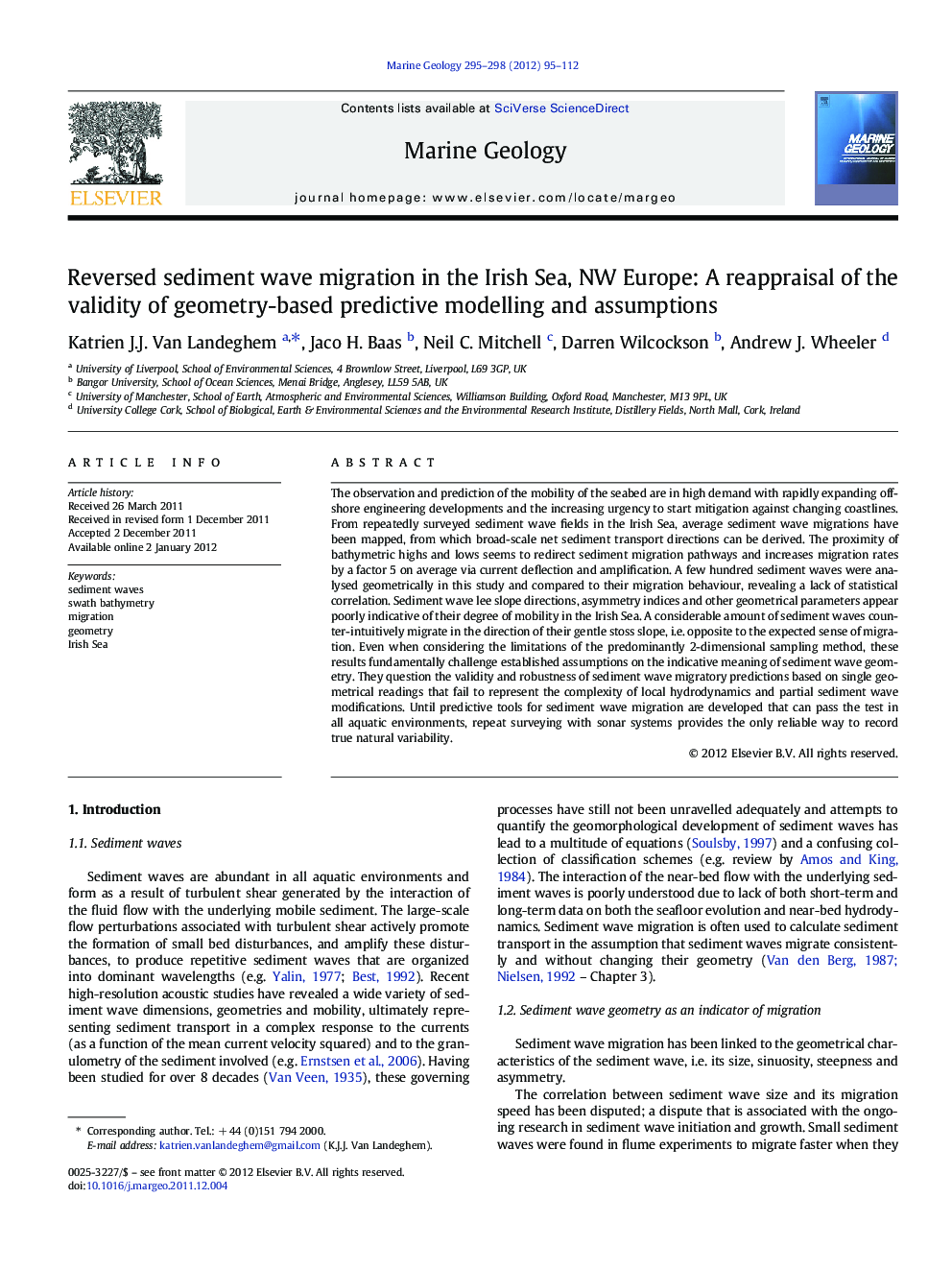| Article ID | Journal | Published Year | Pages | File Type |
|---|---|---|---|---|
| 4718619 | Marine Geology | 2012 | 18 Pages |
The observation and prediction of the mobility of the seabed are in high demand with rapidly expanding offshore engineering developments and the increasing urgency to start mitigation against changing coastlines. From repeatedly surveyed sediment wave fields in the Irish Sea, average sediment wave migrations have been mapped, from which broad-scale net sediment transport directions can be derived. The proximity of bathymetric highs and lows seems to redirect sediment migration pathways and increases migration rates by a factor 5 on average via current deflection and amplification. A few hundred sediment waves were analysed geometrically in this study and compared to their migration behaviour, revealing a lack of statistical correlation. Sediment wave lee slope directions, asymmetry indices and other geometrical parameters appear poorly indicative of their degree of mobility in the Irish Sea. A considerable amount of sediment waves counter-intuitively migrate in the direction of their gentle stoss slope, i.e. opposite to the expected sense of migration. Even when considering the limitations of the predominantly 2-dimensional sampling method, these results fundamentally challenge established assumptions on the indicative meaning of sediment wave geometry. They question the validity and robustness of sediment wave migratory predictions based on single geometrical readings that fail to represent the complexity of local hydrodynamics and partial sediment wave modifications. Until predictive tools for sediment wave migration are developed that can pass the test in all aquatic environments, repeat surveying with sonar systems provides the only reliable way to record true natural variability.
► Sediment waves in the Irish Sea are repeatedly surveyed with multibeam echosounder. ► Sediment waves migrate with 6 m/y, increased 5 times around large banks or deeps. ► The sediment wave geometry appears poorly indicative of their degree of mobility. ► A considerable amount of sediment waves migrate in the direction of their stoss slope. ► Robustness of sediment wave migration predictors based on geometry is questioned.
